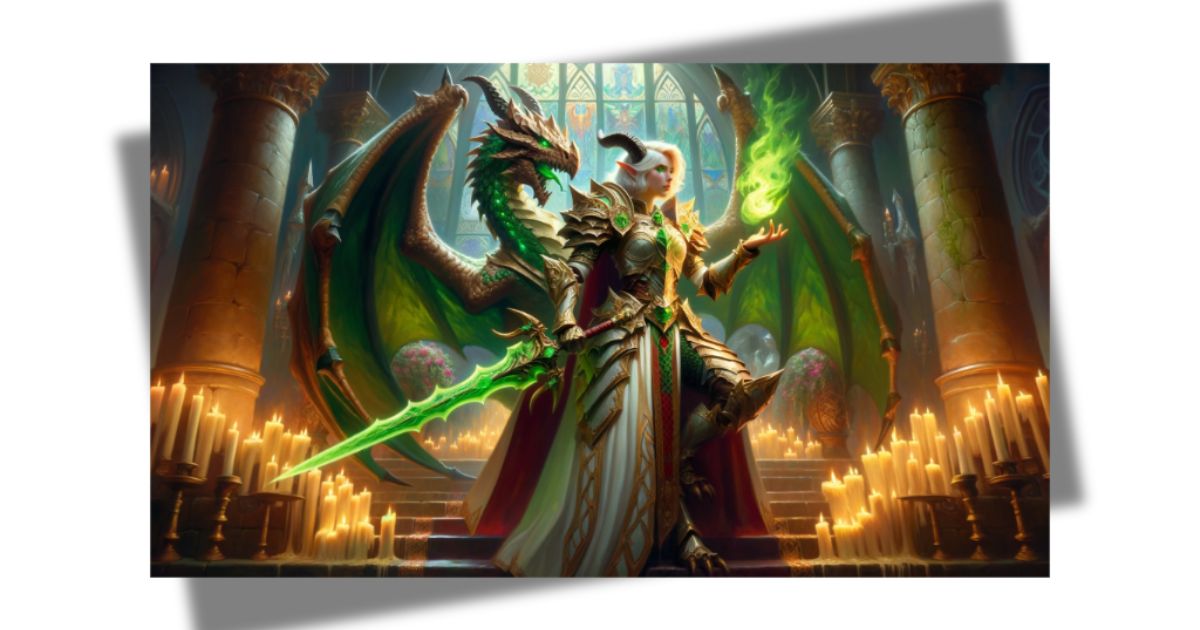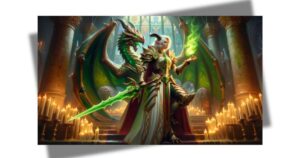The relationship between the Booming Blade cantrip and the Extra Attack feature has been a topic of intense debate among Dungeons & Dragons players for years. This potent combination has left many wondering about the intricacies and mechanics behind its application in the game.
In this comprehensive guide, we’ll delve deep into the official rulings, common house rules, and strategies to maximize the effectiveness of this dynamic duo in your D&D adventures.
Understanding Booming Blade and Extra Attack
Before we dive into the heart of the matter, let’s first understand the mechanics behind Booming Blade and Extra Attack.
Booming Blade is a cantrip introduced in the Player’s Handbook, allowing spellcasters to make a melee attack with a weapon as part of casting the spell. If the attack hits, it deals thunder damage, and the target takes additional thunder damage if they willingly move before your next turn. This cantrip has become a staple for melee-focused spellcasters, providing a reliable source of damage and control.
On the other hand, the Extra Attack feature is a combat ability gained by certain classes, such as Fighters, Rangers, and Paladins, as they progress in levels. This feature allows these martial characters to attack multiple times during their turn, increasing their damage output and combat effectiveness.
According to the official ruling from Sage Advice Compendium (p. 2), the interaction between Booming Blade and Extra Attack is clear:
You can’t cast two spells on the same turn unless they’re a specific exception, like Booming Blade. Booming Blade allows you to attack as part of casting the spell, but it doesn’t allow you to make more than one attack as part of casting it. So no, you can’t use Extra Attack or any other feature that normally allows you to attack multiple times to make extra attacks as part of casting Booming Blade.
In simple terms, while Booming Blade allows you to make a melee attack as part of casting the spell, it does not grant the ability to make additional attacks through features like Extra Attack.
The Debate: Exploring Different Interpretations
Despite the official ruling, the debate surrounding the interaction between Booming Blade and Extra Attack continues to rage on in D&D communities. This is primarily due to the potential benefits and drawbacks associated with allowing or disallowing this combination.
Arguments in favor of allowing Booming Blade with Extra Attack:
- Increased Damage Potential: By allowing Booming Blade to work with Extra Attack, melee spellcasters can unleash a devastating combination of spell damage and multiple weapon attacks, significantly increasing their overall damage output.
- Tactical Advantages: The ability to make multiple attacks with Booming Blade can provide tactical advantages, such as forcing enemies to remain stationary or risk taking additional damage, potentially disrupting their strategies.
- House Rules and Variations: Many D&D groups implement house rules or variations to the official ruling, allowing Booming Blade to work with Extra Attack for increased combat flexibility and excitement.
Arguments against allowing Booming Blade with Extra Attack:
- Strict Interpretation of the Rules: Proponents of adhering strictly to the official ruling argue that allowing Booming Blade with Extra Attack goes against the intended mechanics and balance of the game.
- Game Balance Concerns: Some argue that combining Booming Blade with Extra Attack may create an imbalance, potentially making melee spellcasters too powerful compared to other character builds.
- Potential for Abuse or Exploitation: There are concerns that allowing this combination could lead to abuse or exploitation, particularly in high-level play, where the damage output could become excessive.
Ultimately, the decision to allow or disallow the interaction between Booming Blade and Extra Attack often comes down to personal preference and the playstyle of the group.
Strategies and Tactics for Maximizing Effectiveness
Regardless of whether your group allows Booming Blade to work with Extra Attack or not, there are several strategies and tactics you can employ to maximize the effectiveness of this dynamic duo.
Build Optimization for Melee Spellcasters
- Multiclassing Options: Consider multiclassing into classes like Fighter, Paladin, or Ranger to gain access to the Extra Attack feature while retaining your spellcasting abilities.
- Feat Selections: Feats like War Caster, Polearm Master, and Spell Sniper can enhance your melee spellcasting capabilities and synergize well with Booming Blade.
- Synergistic Spells and Abilities: Explore spells and abilities that complement Booming Blade, such as Thunderous Smite, Booming Blade, or spells that impose forced movement or control effects.
Tactical Considerations
- When to Use Booming Blade vs. Other Options: Carefully evaluate when to use Booming Blade versus other spells or attacks based on the combat situation, enemy defenses, and positioning.
- Positioning and Movement Strategies: Effective positioning and movement can maximize the impact of Booming Blade’s secondary damage effect, forcing enemies to choose between remaining stationary or taking additional damage.
- Combining with Other Party Members’ Abilities: Coordinate with your party members to create tactical combinations, such as using control spells to restrict enemy movement or providing flanking opportunities for increased damage output.
DM’s Perspective: Balancing Encounters and House Rules
From a Dungeon Master’s perspective, the decision to allow or disallow the interaction between Booming Blade and Extra Attack can have significant implications for encounter design and game balance.
Encounter Design Considerations
- Adjusting Difficulty Based on Party Composition: If allowing Booming Blade with Extra Attack, DMs may need to adjust the difficulty of encounters to account for the increased damage output and control capabilities of melee spellcasters.
- Tailoring Encounters for Melee Spellcasters: Incorporate enemy types, terrain features, and environmental hazards that challenge or counter the strengths of melee spellcasters, ensuring a balanced and engaging experience for all players.
Implementing House Rules
If you decide to implement house rules regarding Booming Blade and Extra Attack, consider the following:
- Potential Modifications to the Ruling: You could allow Booming Blade to work with Extra Attack but limit the number of additional attacks, impose a higher resource cost (e.g., spell slots), or apply specific conditions for its use.
- Playtesting and Feedback: Thoroughly playtest any house rules with your group and gather feedback to ensure a balanced and enjoyable experience for all players.
Booming Blade and Extra Attack in Other D&D Editions
While this guide primarily focuses on the 5th edition of Dungeons & Dragons, it’s worth noting that the interaction between Booming Blade (or similar melee spell attacks) and Extra Attack has been handled differently in other editions.
In 3rd and 3.5 editions, spells like Booming Blade were classified as “spell-like abilities,” which could be used in conjunction with full attack actions, effectively allowing them to work with Extra Attack-like features.
However, in 4th edition, the rules were more restrictive, with melee spell attacks being treated as separate actions from weapon attacks, making it impossible to combine them with Extra Attack-like abilities.
These differences highlight the evolving nature of D&D mechanics and the ongoing debate surrounding melee spellcasting in various editions.
Conclusion
The interaction between Booming Blade and Extra Attack has been a contentious topic in the Dungeons & Dragons community, with valid arguments on both sides. While the official ruling provides clarity, many groups choose to implement house rules or variations to suit their playstyle preferences.
Regardless of the approach your group takes, open communication between players and Dungeon Masters is crucial. Discussing and agreeing on the ruling, as well as considering strategies for balancing encounters and character builds, can ensure an enjoyable and fair experience for all.
Ultimately, the key is to find the playstyle that works best for your group, whether it’s strictly adhering to the official ruling or exploring creative house rules. The beauty of D&D lies in its flexibility and the ability to tailor the experience to your table’s preferences.
So, embrace the debate, experiment with different approaches, and above all, have fun exploring the depths of this iconic roleplaying game!
Also Read this Blog: Toby Keith’s Grand 160-Acre Oklahoma Home

Lucas Steele is an experienced professional with 10 years in education. “Teachbullit” is his domain, reflecting expertise in teaching and learning.









